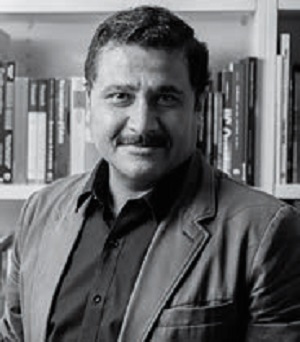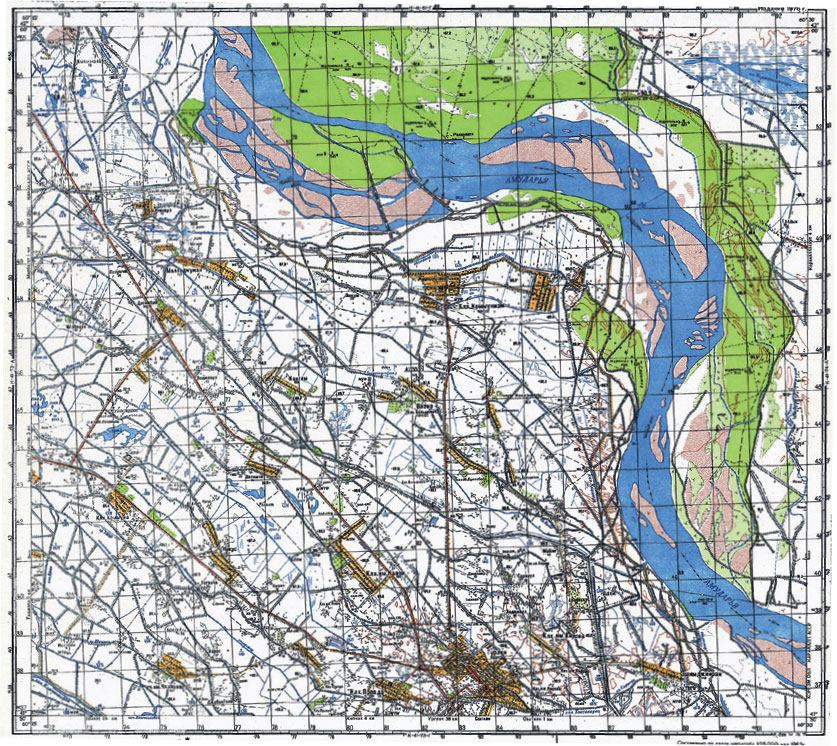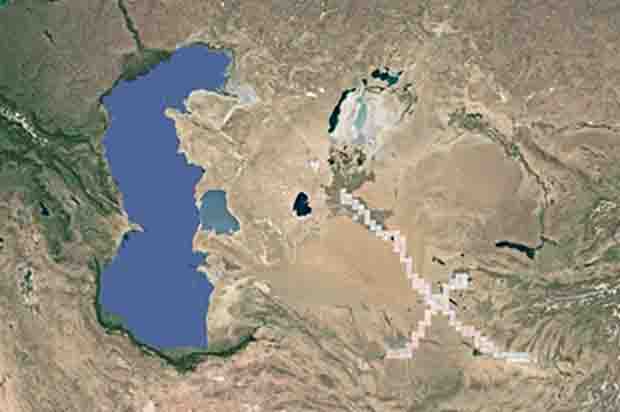You are among the few architectural and urbanist scholars invested in studies on the Central Asian region, a place that despite its cultural richness has evaded the scholarly radar. How did you develop an interest in this part of the world?
As a cultural crucible, Central Asia or Eurasia remains among the last surviving, truly vast and relatively undisturbed geographies with its inter-connected populations that have continued to live in what may be best defined as ‘multiple times’. Most importantly, Eurasia’s shifting geo-politics, borders and concomitant cultural developments still remain incompletely reconciled, even in the modern era. Past its pre-modern legacy, the region came under the shadow of exotic Orientalism preventing any objective perception and scholarship on Eurasia and continues to remain especially challenging, although fabulously rewarding. Genuine scholarship on Eurasia also requires extensive first-hand knowledge of the region – its history, culture and landscape – something well beyond the gamut of what would normatively constitute a single disciplinary area.

My interest developed within the broad purview of the undergraduate architecture research thesis that I completed at CEPT, Ahmedabad, in the early 1990s. At that point, Central Asia and its multiple Republics still fell within the nationalistic constraints of the erstwhile USSR. Yet, even upon cursory observation, it was evident that these Republics were culturally distinct entities. My undergraduate thesis, while overtly interested in the urban patterns within the Indian Subcontinent, was especially provoked by the reconciliation between migrant (foreign) and indigenous urban influences. My focus on the changing urban morphologies observed in the pre-modern city of Bhopal (India), especially positioned me to ask how social spaces were choreographed by migrants who had arrived from Afghanistan and Central Asia between the 11th and 18th centuries.
Following my arrival in the United States in 1993, via Masters’ and Doctorate degrees, numerous travel grants, research trips, language immersions and more, this interest to fathom indigenous Asia greatly blossomed. I started to document the geographies of the Amu Darya borderland that occupied centre-stage for the medieval Arab migrations into Eurasia between 675–750 CE. Over the course of multiple invasions, this legendary waterway had represented the boundary condition connecting desert to steppe. In revisiting Amu Darya’s historical geography, my examination began to develop ways to lend voice to the river’s history and to the cultural landscape on its banks. Beyond archival and cartographic sources, the critical catalyst for this project was my fortunate acquisition of a mid-20th century horde of topographic maps of the Amu Darya and its crossing points. These resources allowed me to develop an unprecedented 3D model of the entire riverine terrain. In effect, the riverine landscape of the Amu Darya – rife with its features, perils and idiosyncrasies – thereby transformed into the new self-identity for passing medieval and pre-modern populations.
It appears that the Amu Darya River at the centre of your work is an ecological geography, a regional urban infrastructure, as well as a cultural symbol that, among other things, formed part of the Silk Route that connected the East and the West. How does your ongoing research balance these aspects?
Rivers are unique artifacts. In writing about rivers, one confronts the relentless quandary of how much to include and how to best anthropomorphise the so-called ‘shape of water’.
For my own research, Amu Darya’s ‘place and time’ narratives have remained particularly challenging, given its regional attributes of serving a cultural boundary condition, yet highlighting the scenarios of contentious, nationalistic resource exploitation – in this case water. Multiple, modern dam projects currently crisscross this waterway, its origin (at Lake Zorkul) and destination (at the Aral Sea) remaining controversial sites. Within the limitations imposed by history, politics and infrastructure, my research proposes Amu Darya and its riparian borderland as a ‘continuous, cultural landscape’, belonging to the multiple nations of Central Asia; a ‘shared patrimony’ that effectively resides alongside the nationalistic conceptions of the multiple nation states that front its banks. Also, in building upon this concept of a ‘continuous, cultural landscape’, my project is particularly interested in the re-mappings of this riverine landscape. These mappings are not so much the process of merely ‘recording’ information, as they are the process of effectively ‘retrieving’ a lost cultural landscape with its palimpsest of human histories.
Within your ambitious study of the Amu Darya in Central Asia, you are specifically invested in mapping several undocumented aspects of this vast region. Which are some of the aspects that remain particularly worthy of study? How and by what means are you doing this, considering extensive data is still not easily available?
With respect to the Amu Darya, three critical questions emerged in my research: first, how do you examine a legendary river so entrenched in history? Second, how do you excavate the palimpsest of her past, record her present and conceive her future? Third, how do you select vignettes in time and space to even limit such a study?
Upon the start of the project, I realised that we would need to carefully combine first-hand fieldwork observations along the river, alongside the meticulous sifting of multiple historical texts. These included the medieval historians al-Tabari, al-Muqaddasi and al-Narshakhi. Their geographical and visual renditions of extra-large, large, medium and small scale across the medieval Central Asian landscape were critical if not entirely imperative towards an understanding of the range of historical maps that would be encountered in the archives. The project moved to interrelate these insights with mapped representations of the Oxus borderland employing visualisation technologies that describe the length and expanse of this evocative landscape.
In our departure from norm, we were particularly interested in uncovering the agency of this historical riverine landscape, well beyond how ‘rationalised’ maps had systematically trivialised the descriptions of places and histories. Maps and their plethora of lines were, therefore, opportunities to ‘unpack’ information as multiple layers, whereby interpretations suggested the ‘removal’ and ‘addition’ of relevant layers.
In effect, we were ‘developing’ the stories of landscapes – not merely as the stories of what these landscapes are (in physical and formal terms), but more fundamentally as how these landscapes have recorded or documented change, either as overtly visible symbols, markings and demarcations etched on the landscape (surfaces) themselves or else as remnants, vestiges or by-products of past and ongoing processes (wrought by nature and man).
There was also the expectation that these engaging vignettes from the humanities would be narratives that moved beyond normative, ‘flatland’ descriptions. Towards this goal, the research interrogated the conventional notion of ‘map-as-fact’, replacing this simplistic reading of cartographic imagery with the more immersive possibilities of map-reading, map-making and mapping as vantages for the ‘thick descriptions’ of spaces, places and social choreographies. After all, ‘conventional’ maps are usually intended to ‘record’ merely how places are (at arbitrary points in time, assuming that time would stand still), and establishing the purported location of the ‘observer’ (usually vertically above) – both readings conveniently packaged via the attributes of scale and neat boundary (paper edge). In contrast, ‘landscape stories’ of the sort we were interested in developing could not only establish ‘change as process’ but specifically innovate ways to represent a ‘simultaneity of mapped readings’ in time and space.

Our Amu Darya project has treated landscape readings of place and geo-political understandings as the ‘archive’ for the project, incorporating maps, land and landscape histories and conventional place histories.
You published a book on Chandigarh in 2017, and have a forthcoming book Riverine Transects with Rutledge and a second called Architecture and Cultural Identity in Pathan Bhopal with Ashgate Press. How do these publications potentially interconnect?
I have always been interested in Asian urbanities, in particular to interrogate how formal, spatial and social changes are catalysed at the ‘edges’ of these urbanities, whether historical or contemporary.
Chandigarh Rethink (published in 2017), was born out of my research-design studio offerings at the School of Architecture & Urban Planning, University of Wisconsin-Milwaukee. Broadly, it captures the ongoing discourse on radically transforming urbanities within the Global South with specific reference to India’s social, historical, economic and cultural repositioning. More specifically, the book examines urban edge ‘figures’ and their rural ‘grounds’, alongside a myriad of issues endemic to proliferating urban hinterlands — relevant not just to Chandigarh, but to other expanding cities across Asia — while suggesting narrative strategies via provocative design studio work. These introspections are by a globally recognised group of scholars who represent the diverse disciplines of architecture, planning, urban design, landscape ecologies and the humanities. Chandigarh Rethink is also intended as a primer for students and instructors examining urban sites wherein restated identities, migrant populations, mercurial economics and past palimpsests systematically defy the purported agency of architecture.
This agency of making and un-making at the edge is also highlighted in my second book Riverine Transects. Within an overview of the multifarious destinies of urban settlements, here I highlight how the waxing and waning of rivers and ‘hydro’ boundaries changes natural, landscape and urban ecologies.
This impact is especially telling in how the limits, borders, zones and banks that underline these hydro or riverine conditions are constantly re-defined.
Realised in the very act of physical making (construction) and un-making (demolition and dismembering) of the sectional transect, I argue that this process has characteristically defined unique urban responses at the water edge. It questions how the historical sites of the city’s terrain and landscape – contours, landforms and water pathways – were modified via infrastructure over time to effectively create the urban palimpsest.



My forthcoming publication, Architecture and Cultural Identity in Pathan Bhopal, frames the transformative impacts on cultural memory within the issues of trans-local migration. In examining the Indian Subcontinent as a crossroads of diverse ethnic groups that migrated from lands that lay to the distant northwest (Central Asia and Afghanistan), it shows how urban centres employed the footprints of pre-existing sites and adapted to conditions of their territorial geographies, emulating older, often foreign and culturally removed patterns of settlement.
In effect, Bhopal is, for me, a classic example of how the ‘layers of migrations’ may still be discerned if one looks carefully, in the re-used vestiges and ‘phenotypical’ variants of building typologies, alongside examples of indigenous architecture.
Many of the cities that you currently study developed amazing, indigenous infrastructures to sustain their populations in the semi-arid regions they were located within. One thinks of the canal networks of Bukhara, the qanat of Iran and the karez of Turfan and Xinjiang (China). Could you elaborate on your observations on the past, present and future of these elements?
Yes, human beings and local populations have adapted intelligently in the areas of my study across Asia extending from the eastern borders of China, to the western reach of the Black Sea. Water – its exploitation and legislation, communal storage, transportation and aesthetic expression – has remained a central theme determining the conceptualisation of urban infrastructures and morphologies. At least, this is how the relevance of water was traditionally comprehended in these cultures, until the advent of the pre-modern era. Thereafter, exploding urban populations, rural-urban migrations and substantial conversions of previously agrarian land to built-up developments have seriously compromised these indigenous (and socially-based) systems.
If miasma and disease were the bane for Bukhara’s canal network, rapid and uncontrolled urban expansion led to the slow destruction of the qanat fields and resulting water shortages in cities like Mashhad, Yazd and Gonabad (Iran).
Likewise, today Turfan’s complex karez network merely functions at a fraction of its original capacity comprising over a 1000 wells and more than 2500 miles of subterranean channels. And even less could be said about the remnants of the qanat or karez systems in Bidar, Bijapur and Burhanpur (India), if at all.
However, across the locations I have just mentioned, and more generally across Asia, the infrastructure of the past is rarely (if ever), even remotely considered within the larger scheme of things and a key player in future scenarios. On the contrary, qanat, karez, haud, baoli, ghat and embankments are in fact vestiges of once-critical infrastructures that are now an intrinsic part of the cultural and natural landscapes that they occupy. Is our public amnesia owing to lost relevance, or is it owing to their normalisation as ‘historical permanences’ on a given landscape? In each of the exemplars I listed, these infrastructures continue to contribute as sustaining resources to the urban and agrarian settings they are connected to, often through human and cultural capital. As regards permanence or the lack thereof, only time will be a true test for how long newer infrastructural constructions around the resource of water will last.



Comments (0)